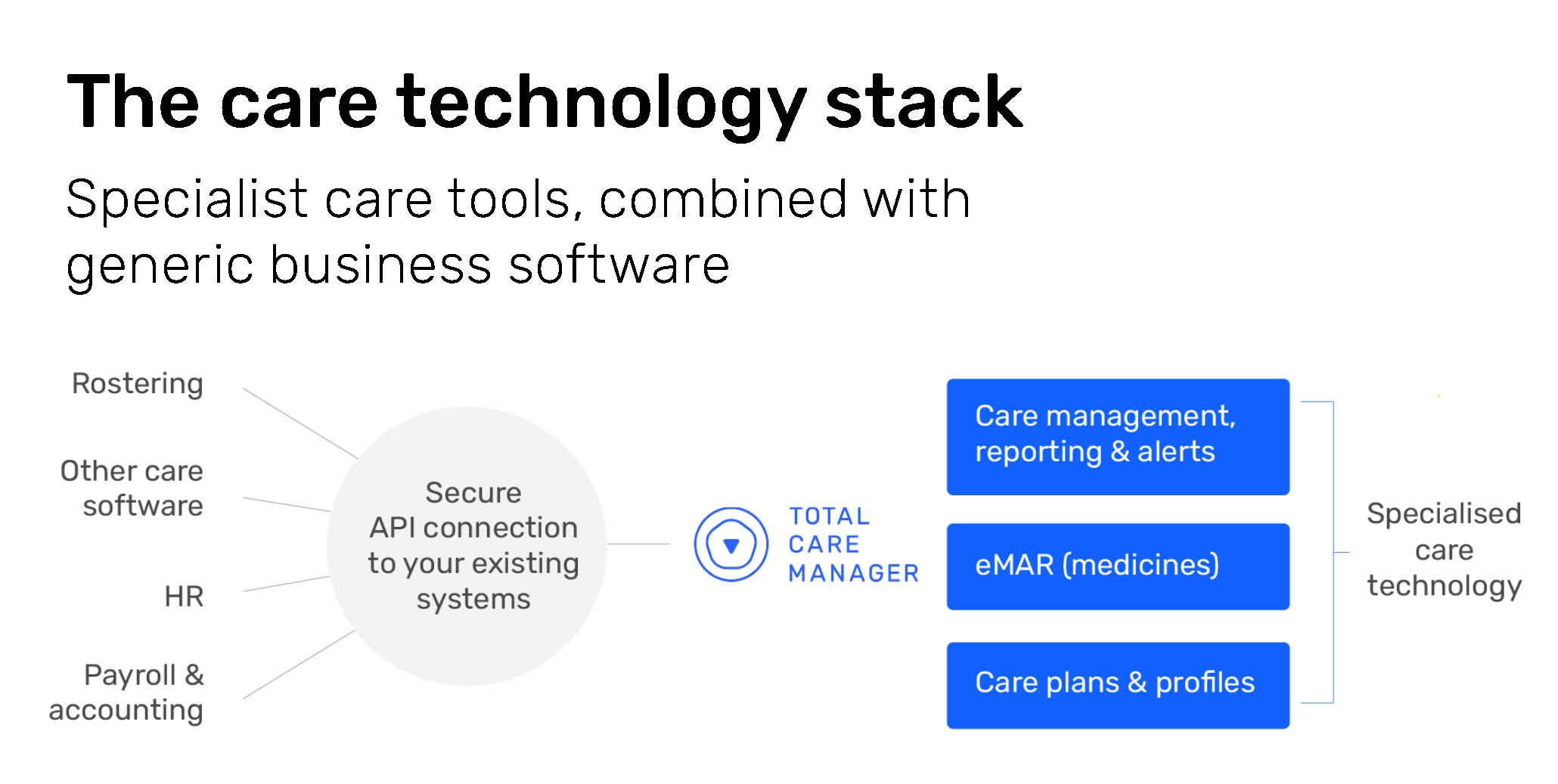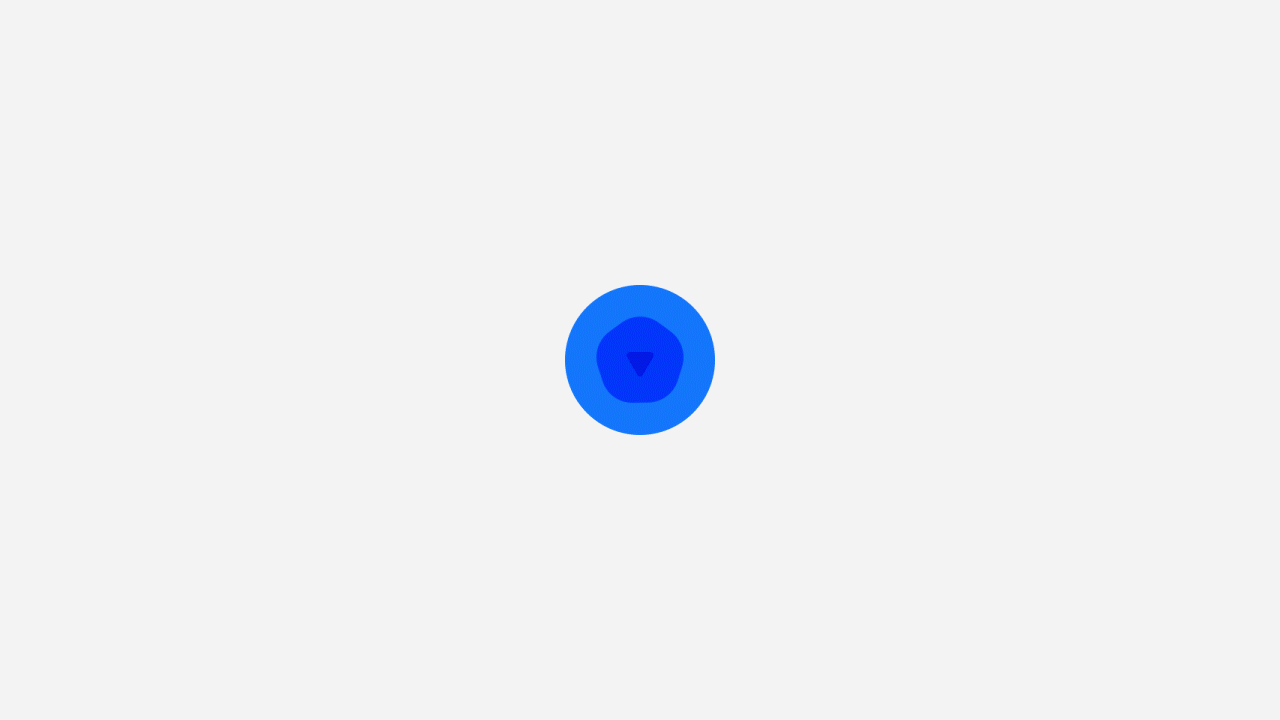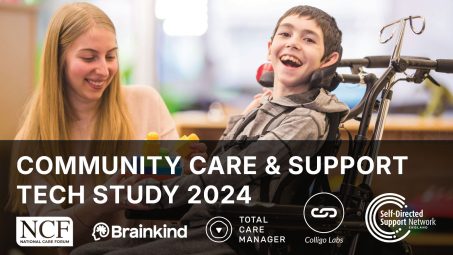
Thursday, July 13th 2023
by Paul Tomlinson, Business Development Director, Total Care Manager
Unsuitable technology is holding care businesses back – particularly in complex care, where software vendors have not understood the patient dependency, or the types of care tasks at hand.
Many of the care agency owners I’ve spoken to recently say that they are looking for single technology platform that does everything. They want one piece of software that fulfils care functions – care management, care reporting and eMARs – as well as other business functions such as rostering, payroll, customer relations, etc.
The same people are often deeply unsatisfied with their existing software and looking to replace it. The incumbent provider’s promises, of an all-singing, all-dancing solution, fell short of expectations.
Not yet have I met a care agency owner who attributes the limitations of their software to the fact that it is designed as an all-encompassing solution.
But the truth is that applying bulky, generic software, to the infinitely varied, and often complex task of caring for highly dependent people, is inherently problematic.
The purpose of this article is to give care agency owners & IT leaders a grounding in different types of technology, so that they can lead digital transformation from an informed position.
We will cover:
- the adequacy of longstanding technology solutions in addressing care providers’ core needs
- the benefits and risks of different types of software – making useful comparisons to other industries which are now moving past antiquated approaches
- how to modernise your technology, in a way that minimizes risk, time and costs, while enabling better care for your patients and your teams.
This discussion is needed because most care agencies, in most cases, still rely to on paper notes in order for care management and reporting to be accurate, safe and compliant.
In complex care, where patient has both clinical and care needs, incumbent technology has proven so unsuitable that many businesses have not adopted any technology at all.
Aside from the time and costs that this incurs, it also exposes the care provider and its patients to a greater risk of errors, with reduced visibility and accountability when something goes wrong. It’s also out of step with the widespread digitalisation of care and healthcare, which is now accelerating.
The good news is that in the last 5-7 years, software vendors across all industries have been rapidly innovating in order to free businesses from restrictive, expensive and unsuitable technology. The overarching trend is towards what are known as ‘composable’ software, where businesses pick and choose the best-in-class technology for their specific use-case. This is the only practical way to achieve a technology platform that’s tailored to the business’s needs.
Having spent 10 years working in business software, with extensive personal experience of the care industry, it’s highly welcome to see this trend now playing out in care.
Technology ought to enhance and extend the capability of your teams to do their best work – not soak up much-needed budgets and hold your business back.
Adequacy of existing care management software
Though different care agencies have differing technology needs, the most common shortfall is the suitability of their software for care management and care logging.
By contrast: businesses appear relatively satisfied with the business functions, such as rostering CRM, accountancy, payroll, etc., that their software also helps with.
This is not surprising. The care agency business model is very similar to that of any other staffing agency, albeit with highly specialised service delivery. As a result, Access – a technology provider widely used by domiciliary care agencies – is actually a generic provider of business management solutions. Access’s same basic software platform is also used entertainment, hospitality, construction, education, recruitment and law.
These core administrative functions are fairly similar from industry to industry, and breadth of experience allows companies such as Access to fulfil them very well.
The problems appear with the care management modules – which are intended to support the most specialised part of your business.
No experienced professionals – in care, or in any industry – welcome people from unrelated industries offering opinions on how to run their business. Yet, software is inherently opinionated: formulated based on one company’s view on how other companies are likely to operate (or a belief of how they ought to operate).
Unfortunately for care businesses, until the last few years, there has been little choice in the market for care solutions, other than generic software, provided by large technology providers. These solutions are provided by teams who may not understand their clients’ ways of working, or the nature of their patient/clients’ needs.
Access is an extreme example. There are now many specialized care solution providers such as Pass, Nourish, Person Centred Software, and Birdie, who have approached the care market more recently, with greater sector knowledge.
These platforms play an important role, particularly in adult social care, where a fairly standard range of non-clinical care tasks is provided to predominantly elderly service users.
Nonetheless: if you ask care agency owners (whether in complex care or adult social care) why they are dissatisfied with their existing technology, you are likely to encounter two primary complaints.
- The software does not adequately anticipate their clients’/patients’ care needs
These inadequacies may be very simple – such as the system referring to the user as a ‘client’, which may seem inappropriate for the nature of the relationship (i.e., if it’s a child). They may have legal or regulatory implications – such as not being able to record both operators of a hoist, since the software only permits one user to sign off a given care task.
Or they may be downright dangerous – such as by restricting the carer’s ability to record the exact amounts of food, fluids and medicines given, the delivery route, and variances in the medicine schedule.
- The software vendor takes too long (and charges too much) to tailor the software to the client’s needs – or hoped-for developments simply never materialise
Invariably in business software, clients expect the solution to be refined to address their specific use-case. Software companies do their best to anticipate their clients’ need when initially developing a solution. Once they have stable revenue, however, they begin to shift resources to account management and new business – and further refinement for individual use-cases falls off their priority list.
Furthermore, developing larger, older pieces of software is nearly always slow, complicated and expensive – which I will discuss in the next section.
Weighing up the strengths of different types of care technology
There is a direct causal link between the use of what are known as ‘bundled’ and ‘monolithic’ technology solutions, and the deficiencies that care agencies are experiencing with their software.
Bundled care platforms
A bundled solution is a single piece of software which fulfils multiple different functions.
For instance, Access, Birdie, Nourish and Person Centred Software are all bundled solutions, since the care modules (care plans, care logging, eMARs, etc), exist alongside generic business tools such as CRM, rostering, payroll, etc.
Bundled solutions sound attractive. With only one technology supplier, you only have one invoice going out every month, one customer service touchpoint, and your various teams (including your IT team) only have to learn how to use one piece of software.
For about 30 years, bundled solutions were the default approach to business technology in most industries – and the attractiveness described above is still helping them hold on to clients.
In practice, however, the attempt to produce an all-singing, all-dancing solution comes at a trade-off against the ability to produce highly effective tools. This is easy to understand when you consider the other technology we are familiar from in our daily lives.
An iPhone contains components from over 200 suppliers.

This diagram shows the primary technology modules used by a care agency or care home
Your car, similarly, may be manufactured by Volvo – but have an engine supplied by Ford (albeit with a fuel injection system from Bosch). The tyres may be from Bridgestone or Dunlop, many of the other electrical components from Mitsubishi, and the sound system could be from Bose. 3M, the science company, manufactures around 1000 different vehicle components and supplies every major car brand.
And actually, most technology items contain components from multiple different manufacturers. The reason for this is simple: no vendor can be excellent at everything – and if they tried to be, they would produce inferior products.
Peter Ross, CEO of both Cygnet Digital, a development agency, and Samm, a sound & movement monitoring solution for care homes (and a partner of Total Care Manager), says that this trend is uncannily similar across sectors.
“We hear very similar complaints from retailers and care agencies, they have broadly reached the end of their tethers with large software companies. These vendors are very good at taking their money, but relatively unresponsive when it comes to understanding the client’s businesses.
In retail the ‘bad guy’ is typically SAP or Magento or somebody like that – companies which have been around for decades. In care, what’s a little frustrating is that the incumbent vendors may only be 10 years old, but are still causing headaches for care businesses in areas where other business vendors have got their acts together.
Thankfully this is now changing and major, needless inefficiencies are about to be resolved in the care sector by the arrival of more capable solutions.”
Developing a suitable care management solution for complex care, at Total Care Manager – and anticipating a sufficient range of range of use cases, patient needs and care tasks – took us years. But it was only possible because we focused our core expertise on building a best-in-class solution.
So rather than depending entirely on bundled solutions, businesses should select technology from various suppliers who excel at their different needs. These solutions must then be integrated to achieve the business’s technology platform – I explain how this works below.
Monolithic care software
This term implies that the software is designed in such a way that all the different modules are very tightly interconnected, which makes changing anything extremely difficult. For instance, a small change to the care logging module, or the accounting module, might require taking the entire system offline so that the vendor can carry out extensive testing. Despite the testing, since the vendor is making unpredicted changes, there is always a risk problems occurring when you try to restart the system.
Access is an example of a monolithic system. Outside of care, the best-known monolith is probably Salesforce, and there are many other providers of legacy, monolithic technology platforms in most industries.
Monolithic, bundled platforms were the standard approach to building software until around 10 years ago, and they have paid handsome dividends for the solution vendors. Development fees in the tends of thousands of pounds are commonplace as clients wait (often for 6-9 months) for even relatively simple modifications.
This is not necessarily because the software companies are greedy. It’s because the software is built according to inherently slow and inflexible design principles – so the vendor couldn’t work any faster or better if they wanted to.
Meanwhile, the rest of the technology world has moved on.
*
It is worth mentioning that bundled solutions are not necessarily monolithic. For instance, Birdie is a bundled solution, but built on modern design principles, which are intended to avoid such problems – more in this below.
However, I have heard anecdotally, from users of even relatively modern bundled care solutions, that they still face many of the same problems of unfulfilled promises, slow development and restricted capabilities.
This is largely because these companies are stretching their resources across a very broad technology platform. This means that the hoped-for developments in the crucial care modules are in a long queue, alongside other developments in modules such as the CRM and rostering system. The costs of these changes are split across every client’s fees – whether or not they need or value those changes.
In short: care businesses, hoping that they will soon rise to the top of a bundled solution vendor’s priority list, are likely to be disappointed.
Composable care software
The widely accepted solution to these problems, across the business technology world, is to select what are known as software ‘microservices’ that answer your business’s specific needs.
‘Microservices’ are solutions that only fulfil one, or perhaps a handful of business requirements, and there are often multiple competing vendors for each individual microservice. For example the care business may choose a preferred microservice for care management, another for rostering, another for eMARs, and so on.
Microservices designed in this way are also known as ‘composable’ solutions. This means they are purpose-built for the client to pick, choose, integrate and replace individual components as they see fit, in order to operate their own ideal software platform.
Adopting composable architecture is not necessarily easy for businesses already operating a bundled solution. The most common customer objection to composable architecture is that the customer does not have the IT resource to assemble and manage the technology platform.
This is understandable, but as I discuss in the next section, there are solutions to this challenge. And with the extensive benefits on the table, businesses in most industries are now migrating to composable architecture.
These benefits are wide ranging, and mostly the subject of future articles, but they include cost, agility, speed of development, data security, and ultimately future-proofing your business technology.
More simply, though, business leaders everywhere now regard it an unacceptable opportunity cost to suffer outdated, limited ways of working, when better options are readily available.
In care and healthcare, where patient/client safety and quality of service are directly affected by the supporting technology, it’s imperative that companies to find ways to evolve.
Selecting appropriate care technology for your business
Your ideal approach to adopting best-in-class technology for your care business will depend on your present phase of digital transformation.
1. Care agencies seeking to improve on an existing care platform
In most cases, it would be risky to attempt a wholesale replacement of your incumbent bundled platform if its already being used by HR, payroll, accounting, etc., as well as your care teams. That’s even more true if it’s integrated with one or two other pieces of business software, and if you’ve built business processes and trained people around that technology.
Furthermore, such a bundled platform can only really be replaced by a more modern bundled solution – which leaves you with many of the same problems.
The established approach to composable adoption is what’s known as ‘the strangler pattern’. This is a method whereby the business applies individual microservice upgrades around their existing platform, one or two services at a time.
These microservices will exchange data with your existing platform automatically via APIs (since this is what composable solutions are built for). This approach has two core benefits:
- you gain the enhanced functionality of the new technology, whilst the incumbent platform auto-updates via the integration with no additional administrative effort
- you can prioritise the most urgent upgrades in your business and train up individual teams, staggering out the investment and learning curve.
Thanks to this, no other teams or established processes experience disruption as your highest-priority areas are improved.
Fully replacing your incumbent technology platform in this way may take several years. You can take as long as you want to adopt each individual microservice and allow your teams time to adapt and learn.
Soon, though, you will each a point where the incumbent platform becomes obsolete, and can be cleanly removed, since many or all of its functions have been moved onto best-in-class microservices.
2. Businesses adopting care technology for the first time
Most care agencies and care homes are SMEs, whose budgets and IT resources are limited. They are mostly aware that their paper- or spreadsheet-based systems are inefficient, but are understandably cautious of the cost implications of adopting an enterprise-class care platform.
If that’s your business, I would recommend starting with one or two pieces of more affordable software which address your most pressing requirements.
If your priority is to digitalise most of your administrative processes, such as staff management and financial functions, a modern, bundled care management platform could sensible choice. Such a piece of software should be ‘API-first’ – i.e., specifically designed to interoperate with composable microservices. That would lay your pathway to adopting additional microservices as you discover the limits of the bundled solution and seek further improvement.
Birdie is the only bundled care platform currently claiming have an open API. This means that a care agency adopting it as its core platform (for care and general business functions) ought to find it relatively easy to integrate more specialised microservices as needed.
Many care agencies and care homes, however, would like to prioritise enhancing their core business of care delivery and logging. These functions produce mountains of paperwork, at great administrative cost and at significant risk of errors. In the case of publicly-funded care, businesses depend on this reporting for their revenue, further increasing the business case for effective technology.
Total Care Manager is one such microservice, designed as the only care management microservice designed for complex care (i.e. supporting highly-dependent people with clinical & nursing needs). As a composable, API-first solution, it can integrate quickly and easily with any other existing care platform or piece of business software.
Workforce management is another key area in which care businesses (and remote care agencies, in particularly) would benefit from technology. There are many such platforms available. Sona is one workforce management vendor with a growing portfolio of clients in the care sector, doing an excellent job courtesy of not attempting to replace care systems. Instead, it has kept focus on producing an enterprise-class tool which integrates cleanly with care management software.
Companies may also wish to take advantage of new hardware.
You might, for instance, want any patient activity recorded in your sound & movement monitoring tools overnight to automatically appear in carers’ notes when they start the day shift.
The same applies to wearable tech.
Integrating such devices with a bundled, monolithic care platform would be possible, but difficult and expensive. With composable software, it could potentially happen in a few hours at little or no development cost.
*
In other business categories, the composable trend has seen thousands of new microservice solution vendors come to market in the last 10 years, seeking to answer very specific customer needs. This trend is now beginning to play out in care and healthcare.
As a sign of what’s to come: in the US, a company called Redox has been founded to simplify integrations between connected healthcare platforms.
I would also highly recommend consulting with a technology expert in your search for appropriate solutions.
Your existing IT team will likely be able to help you implement and run one or two new pieces of technology. In most industries, however, ‘system integrators’ (also known as ‘digital agencies’) are often preferred to help companies operate more sophisticated composable systems.
System integrators typically only operate in one industry, and have very detailed sector knowledge, in order to be able to consult based on deep understanding of their clients’ needs. In the UK, one such company serving the care industry is Guided Innovation.
Practically speaking, this does mean an additional commercial relationship, but it should reduce your overall technology spend.
Vendors of legacy care software have profited handsomely off providing, customizing and consulting around ineffective solutions. By migrating to composable architecture, you can shift that budget towards partnerships which can future-proof your technology and your business, whilst keeping costs under control.
Improving patient & client care with composable tech
Care agency owners frustrated with their existing care platform, and seeking a wholesale replacement, are likely to remain frustrated.
Not only are viable alternatives lacking; new ones are also extremely unlikely to come to market. Technology companies, having learnt from the mistakes of the past, are no longer attempting to build all-singing, all-dancing software platforms.
Similarly, investors are no longer backing software built to outdated design principles, recognising that revenues will suffer at technology companies which do not future-proof their clients’ growth.
Furthermore, legacy software providers in many industries are struggling to recruit development staff. The incoming generation of software engineers has not been trained in antiquated methods, and is not interested in learning – further restricting these companies’ to keep pace with customer requirements.
The bottom line is, whatever your business’s size, priorities, or state of digital transformation, your most pressing technological needs will be best addressed composable software.
This is the only technology approach that can allow software companies to respond quickly and adequately to the highly individual nature of service delivery in the care industry.
It’s also the only approach by which you can quickly adopt additional services as they come to market, ensuring you’re always working with the most suitable and up-to-date tools.
Above all: this is the only way can you be sure of operating a software platform that’s sufficiently capable and adaptable for the needs of your clients/patients and your care teams.
About the author

Paul Tomlinson. Business Development Director, Total Care Manager
Paul Tomlinson combines a lifelong passion for the care industry with extensive experience of technology marketing and business development.
Having worked at both mature firms and startups, in retail, fintech, marcomms, manufacturing and more, Paul is a strong advocate of the potential of technology to enable innovation and growth at companies of all shapes and sizes.
Get in touch with Paul here.
About Total Care Manager’s composable care management platform
Total Care Manager is the only care platform specialised for complex care.
As a vendor of composable care technology, we provide the core technology modules needed for care: care management, care plans and eMARs.
And as an API-first platform, we can integrate quickly and easily with your other business software. That includes generic business software, such as rostering and CRM, and other, less-specialised care management platforms.
Find out more about Total Care Manager here.




